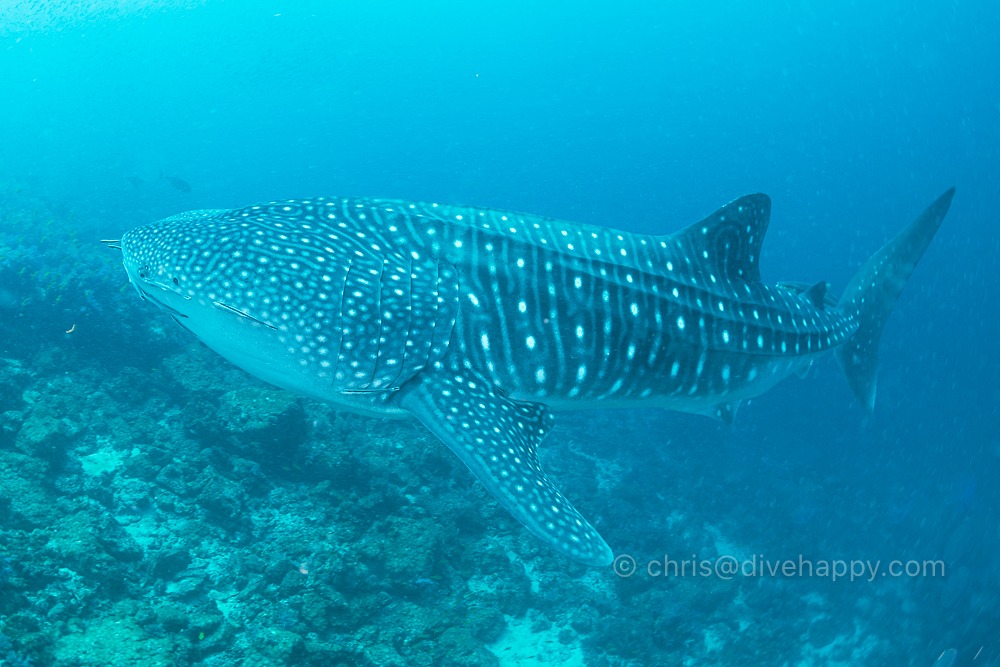South West Pinnacle and Sail Rock are both geographically dramatic dives, providing deep depths and interesting ascents
South West Pinnacle and Sail Rock are Koh Tao’s two other deep water dive sites. South West Pinnacle is a beautiful site that, like Chumphon Pinnacle, repays repeated visits. It is actually a whole series of small pinnacles with the central pinnacle rising all the way to within five metres of the surface. Maximum depth is around 26 metres, unless you wander away from the pinnacle. There are no sharks here, although whale sharks have occasionally been spotted which keeps everyone hopeful – but what it lacks in terms of big fish South West makes up in terms of the sheer profusion of smaller species. There are huge clouds of glassfish hanging around the main pinnacle and just off it too, while grouper and morays are skulking in the pinnacle’s crevices. Following a classic deep descent and then working in a slow circular ascent back up the pinnacle, it’s possible to see the underwater landscape from numerous angles on the way up, looking different each time. Hanging around at the pinnacle’s apex are another collection of batfish, as if waiting to keep you company on the five metre safety stop. South West is an unabashedly pretty site, and when the visibility is good – which is most of the time – it can be quite breathtaking, even if it doesn’t boast the headline attractions of Chumphon.
Sail Rock is always bigged up as a major dive site off Koh Tao but it’s actually a bit of a pain in the backside to my mind – it takes a long cruise to get out there – over 2 hours – and the viz is often shocking. I’ve dived there several times and only once was the viz good enough to actually see anything. Another big pinnacle slam in the middle of the ocean which goes down 40 metres plus, Sail Rock is roughly square shaped and big enough to spend the entire dive circling once. The main point of interest is a beautiful coral chimney, big enough for 2 divers to ascend from 16 metres to the chimney’s opening at 5 metres on the flat coral reef above. This is undeniably quite spectacular but for the time and effort Sail Rock involves, I’d recommend leaving it alone unless you’re spending a week or more diving at Koh Tao.
More About Koh Tao:
- Koh Tao: An Introduction
- Koh Tao, Thailand: Learning To Scuba Dive
- Koh Tao Dive Sites: Chumphon Pinnacle
- Koh Tao Dive Sites: South West Pinnacle and Sail Rock
- Koh Tao Dive Sites: Hin Daeng
- Koh Tao Dive Sites: Green Rock, White Rock, Shark Island
- Koh Tao Dive Sites: Twins, Japanese Gardens, Mango Bay


